Day Seven: June 16
Today’s drive was not as long as I had thought it was: it was long, to be sure, but not the longest of the trip, and it left me time to add a first visit to Dinosaur National Monument this afternoon. That plus the fact that I finally set up my GoPro camera’s dashboard mount give me something to actually post about today.
First, the GoPro: I had wondered if it would take good pictures through the windshield, or just pictures of the windshield’s dust and spattered bugs. It turns out it took very nice pictures. The downside is that its battery gave out after around two hours, so I got road pictures of only the first third or so of the drive. I was disappointed by that: two hours is about how long a GoPro’s battery is supposed to last while shooting continuous video; I had assumed shooting still pictures it would last longer, being able to go into some degree of power-saving mode between shots. But apparently not. I could plug it into my car’s USB power outlet— but the cord isn’t long enough! If I want photos of the road, I’ll either need to get a longer cord or else turn the camera on and off as I go, which would make it harder to get quick shots.
But let’s see what I did get before the camera ran out of juice. Today’s drive was highly varied, moving from one type of landscape to another, keeping things interesting most of the way.
After Steamboat Springs, the road wound through more mountains, then down into a desert, and finally into the desert.
I passed my sightseeing destination, Dinosaur National Monument, on the way to my hotel, and seeing by the clock that I had plenty of time, I turned off to take a first look.
There’s a disappointment here that I knew about already: the reason I put this destination on my itinerary, when planning this trip almost a year ago, was to see the museum with all the dinosaurs in it. The “Dinosaur Quarry Exhibit Hall” is the reason this is a National Monument. It’s a museum built around former quarry where workers discovered dinosaur fossils, and features the “Wall of Bones,” a face of the quarry with 1500 dinosaur bones still embedded in it (not counting however many are still buried in the rock behind the exposed face). Besides the wall, the museum features reconstructed skeletons and sculptures of the dinosaurs excavated from the area after the discovery.
Unfortunately, it’s closed due to the epidemic. Each park in the system is setting its own policies for reopening, and at Dinosaur all roads, hiking trails, and campgrounds are open, but all visitor centers and the museum are closed. Evidently the museum is normally very popular, to judge from the enormous parking lot now standing empty, and the signs pointing out a shuttle bus (normally) runs from a more distant park-and-ride in case the lot fills up. It’s all deserted now.
I knew this coming in, and would probably have dropped Dinosaur from my itinerary if there was a way to slide the other destinations forward a day or so. That would have been a mistake! I may not be able to see any dinosaur fossils this time around, but I found the park has some amazing geology and spectacular landscapes. I’ll just have to come back for the dinosaurs another time.
Meanwhile, here are some pictures I took today on my first look around:
The area is a desert, with an arid landscape and bare stone mountains quite different from the forested and snowcapped peaks of Rocky Mountain National Park.
| The Green River runs through through the desert, supporting larger plants and trees along its banks while the desert prevails only a few yards further away. | 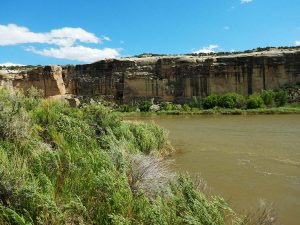 |
There was an inland sea here before the time of the dinosaurs, and again off and on after them, producing distinct sedimentary layers that have been lifted up and tilted by the tectonic forces that raised the Rocky Mountains.
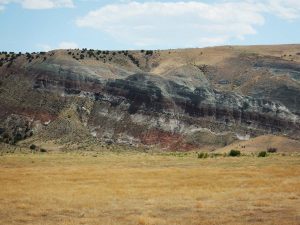 |
 |
There are also archaeological sites in Dinosaur, like these petroglyphs.
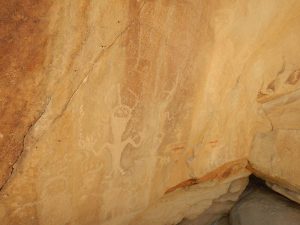 |
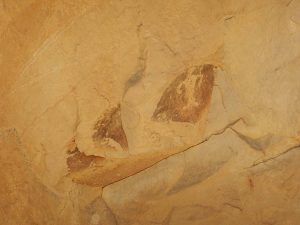 |
These were not made by the Ancestral Puebloans who left petroglyphs across the southwest and built the cliff dwellings of Mesa Verde (where I will visit later in this trip). These petroglyphs were left by a vanished culture archaeologists call the Fremont People, who lived at roughly the same time as the Ancestral Puebloans but were a distinctly different culture.
Trip Report:
Miles driven today: 335
Total miles so far: 1400.1

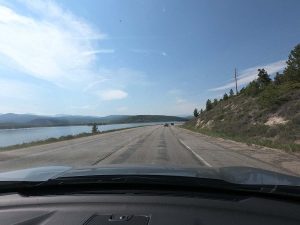
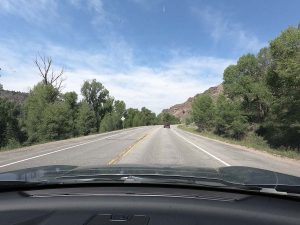
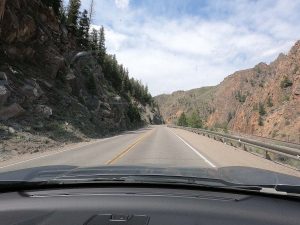
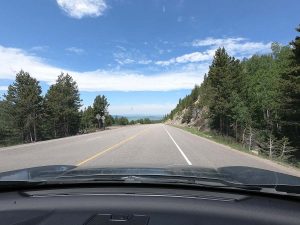
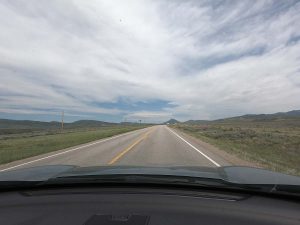
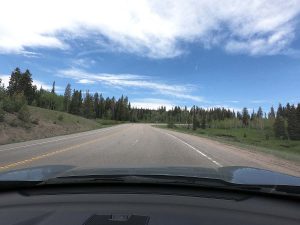
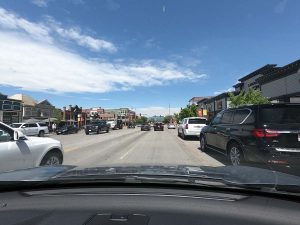
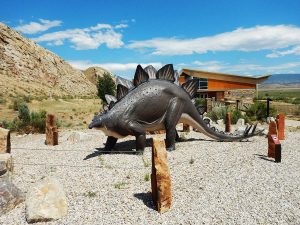

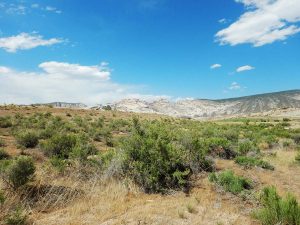
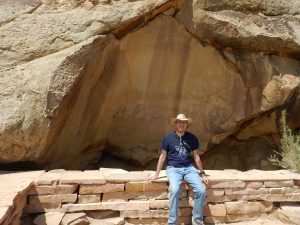

1 comment for “2020 Road Trip Journal: Estes Park to Vernal, Utah”